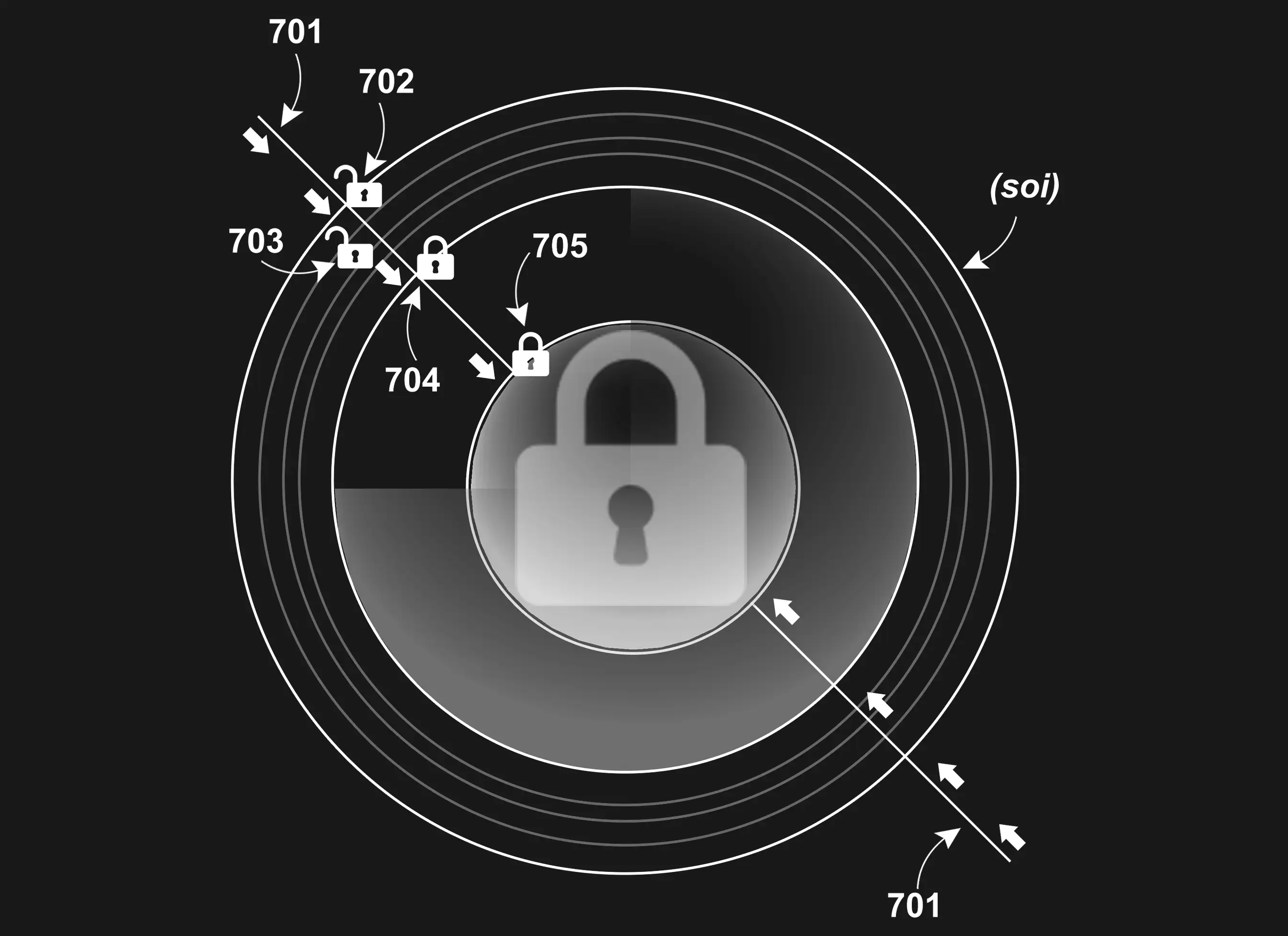US9513671B2
2016-12-06Peripheral retention device
- Filed
- 2014-08-01
- Assignee
- Microsoft Technology Licensing, Llc
XRDNA Patented Core
Our inventions define how data becomes operational: containers and panels compose content into action; vector addressing and SoI govern precision, privacy and movement. This page summarizes what’s protected and where you’ll see it across XRDNA products.

These patents establish a 5-dimensional addressing system (X, Y, Z, time, planar variable) that precisely locates physical + digital objects and spaces across space, time, and layered planes of reality. Built on this foundation, they cover volumetric containers tied to contextual metadata and controlled by spheres of influence, along with methods for searching immersive environments, directing users to the authoritative rendering servers with redundancy, and highlighting relevant results—essentially a Google Maps for the spatial web and metaverse.
Vector Addressing
Core Vector and Vector Nodes define precise positions/addresses for content, people, and objects in X-Y-Z and time.
Spheres of Influence
Layered privacy/security zones (Private→Social→Public) control ingress/egress of data and actions by context.
Inter-Vector Relationships
Nodes form links across planes/timelines; events and SoI policies route data and actions safely between containers.

Hierarchical content containers mapped into composable, schedulable panels with multi-sense outputs. The patents cover systems and methods for organizing, linking, scheduling, and displaying multimedia and data inside nested containers and panels. These containers can hold video, audio, images, live streams, advertising, and also structured data such as metadata, polygons, and contextual information. The inventions enable nesting across multiple tiers, linking between containers, detecting intersections in data relationships, and generating combined displays. They also support scheduling, contextual awareness (including geo-location and eye-tracking), and multi-modal user interaction, making the framework applicable to both media and data-driven applications.
Container → Panel Mapping
Heterogeneous assets (video, audio, images, polygons, metadata, DB rows) ingest into a Nested Media Container, then bind to panel regions with depth and role semantics.
Organizer & Scheduling
Conflict-aware scheduling across live/on-demand, channels and ad slots; validation, ingest pipelines, and reflow across devices and geos.
Multisensory & Z-Space
Panels render visual, aural and tactile outputs; composites can stack in Z-space for context-aware layouts and reuse.
Each capability below is a direct application of one or both families.
Capability
Visualization & orchestration engine for containers, panels and vector nodes; renders COPs, missions, and operations.
Capability
Composable panels built from NMCs; schedule, blend in Z-space, and publish to desktop, mobile, headsets/wearables.
Capability
Implements vector addressing for people, assets, tasks and content; precise, movement-aware delivery & logging.
Capability
Applies layered zero-trust controls (Private/Social/Public) to containers, panels, data streams and automations.
Capability
Routes requests via vector addresses and SoI policy; runs automations and writes results back into MoE/NMP.
Capability
Panel-centric runbooks that drive incident response and ops; validated actions with audit trails inside SoI.
Titles and numbers shown for navigation; see counsel for legal scope. © XRDNA.
Patent Analysis
Peripheral retention device
Web resource compatibility with web applications
Guard band utilization for wireless data communication
Enhanced recognition of charted data
Enhanced interpretation of character arrangements
Spread spectrum wireless over non-contiguous channels
Intelligent content queuing from a secondary device
Styleable transitions
Inductive peripheral retention device
A kind of message forwarding method, device and system
Co-locating containers based on source to improve compute density
Method and system for aggregating content streams based on sensor data
A method and readable storage medium for generating a full coverage nested container with no intersection at the same layer
Techniques for placing content in and applying layers in an extended reality environment
System and methods for tokenized hierarchical secured asset distribution
Container number elastic expansion method and container number elastic expansion method system
Compositing non-immersive media content to generate an adaptable immersive content metaverse
Augmented reality media timeline management and interaction system and method
Simulation program, simulation device and vector presentation method
Image pickup device and electronic system including the same
Equipment identification method and device
Method and device for carrying out classification analysis based on user data
Data presentation and modification